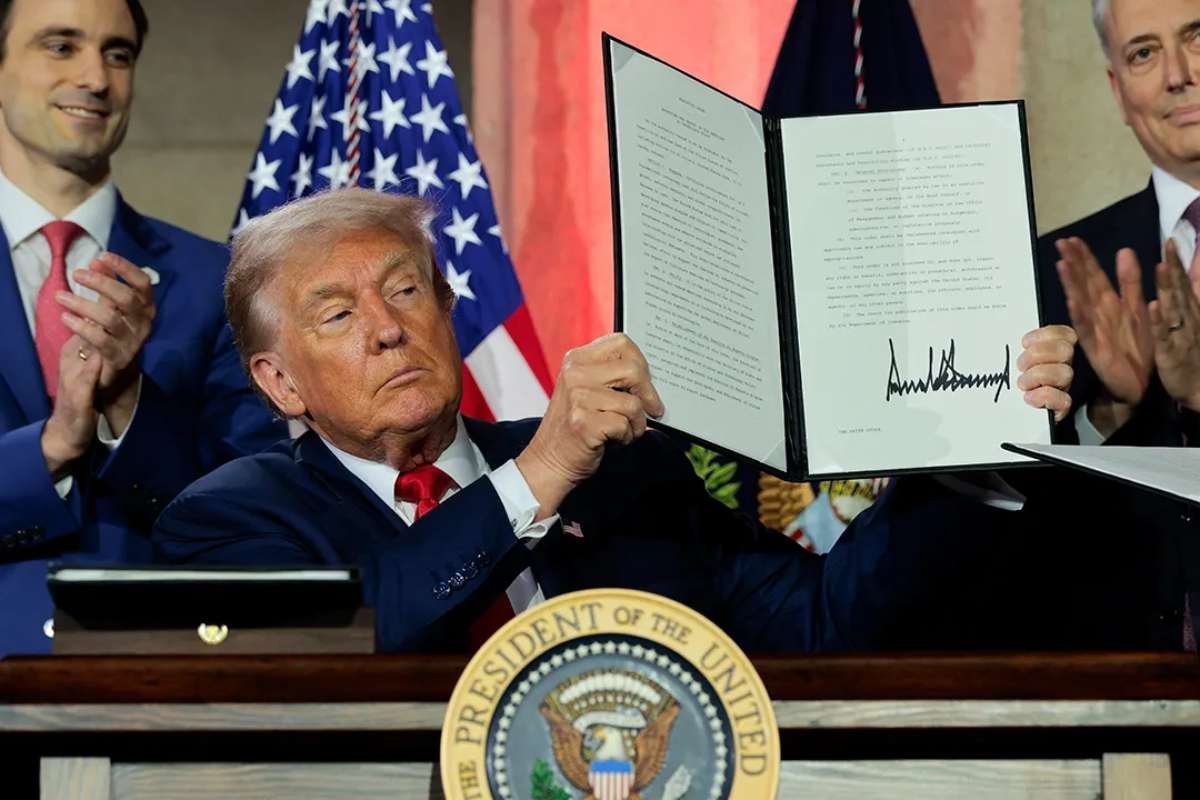Key Points:
- Trump Blocks AI Bailout 2025, signaling stricter tech subsidy policies.
- OpenAI faces scrutiny over infrastructure funding and transparency.
- Policy shift may reshape U.S. AI investment and development.
The U.S. administration has taken a firm stance on the future of artificial intelligence funding, announcing that there will be no federal support under the AI bailout 2025 initiative. David Sacks, recently appointed as the administration’s lead on artificial intelligence and cryptocurrency policy, stated that the government will not use taxpayer funds to rescue private AI enterprises even if they struggle financially during rapid industry expansion.
Sacks emphasized that the United States already hosts several major frontier-model companies, and if one falters, the broader AI ecosystem will continue to function. According to him, the focus of federal policy is not on financial rescue but on accelerating national infrastructure speeding up permitting, boosting energy capacity, and ensuring that residential electricity prices remain stable despite surging industrial AI power demand.
This marks one of the clearest signals yet that the administration intends to promote AI growth through market-driven competition rather than government intervention, defining a regulatory environment where companies must sustain themselves without expecting federal support.
OpenAI Clarifies Position After CFO’s Financing Remarks Spark Backlash
Amid the growing debate over federal involvement in AI development, OpenAI has been thrust into the center of attention. The company’s Chief Financial Officer, Sarah Friar, had suggested that government loan guarantees could ease financing constraints for large-scale AI infrastructure investments. Her remarks sparked immediate political and industry concern that OpenAI was seeking support under the AI bailout 2025 framework.
In response, OpenAI Chief Executive Sam Altman moved quickly to clarify the company’s position. In a public statement, Altman said OpenAI is not attempting to make itself “too big to fail” and does not intend to rely on government guarantees for its extensive data-center expansion. He emphasized that if OpenAI fails to execute responsibly and sustainably, it should be allowed to fail like any private company.
The company later explained that any discussions involving government loan guarantees were focused solely on domestic semiconductor manufacturing considered a strategic national priority not on AI data-center financing. The clarification underscores OpenAI’s attempt to distance itself from any perception of seeking federal safety nets amid its unprecedented infrastructure commitments.
What the Decision Means for the AI Industry’s Future
The developments highlight the growing tension between the capital-intensive nature of AI innovation and the government’s desire to maintain a hands-off approach. OpenAI has signaled massive investment plans estimated in the trillions over the coming years driven by the need for advanced compute capacity, power supply, and semiconductor access, despite the absence of support under the AI bailout 2025 initiative.
By refusing to provide bailouts or guarantees, the administration is sending a strong message: the AI industry must chart its path independently. Advocates of this approach argue that the market will naturally reward the most efficient and well-run AI companies, preventing the creation of monopolistic or government-dependent giants. Critics, however, warn that leaving companies entirely on their own could slow U.S. leadership in the global AI race, especially as other nations increase their state-funded AI initiatives.
For now, the U.S. government appears intent on supporting the sector indirectly by expanding infrastructure and reducing bottlenecks rather than offering direct financial backing under the AI bailout 2025 framework. As AI investment demands continue to surge, the industry will closely watch how companies navigate this new, more disciplined financial landscape.


















